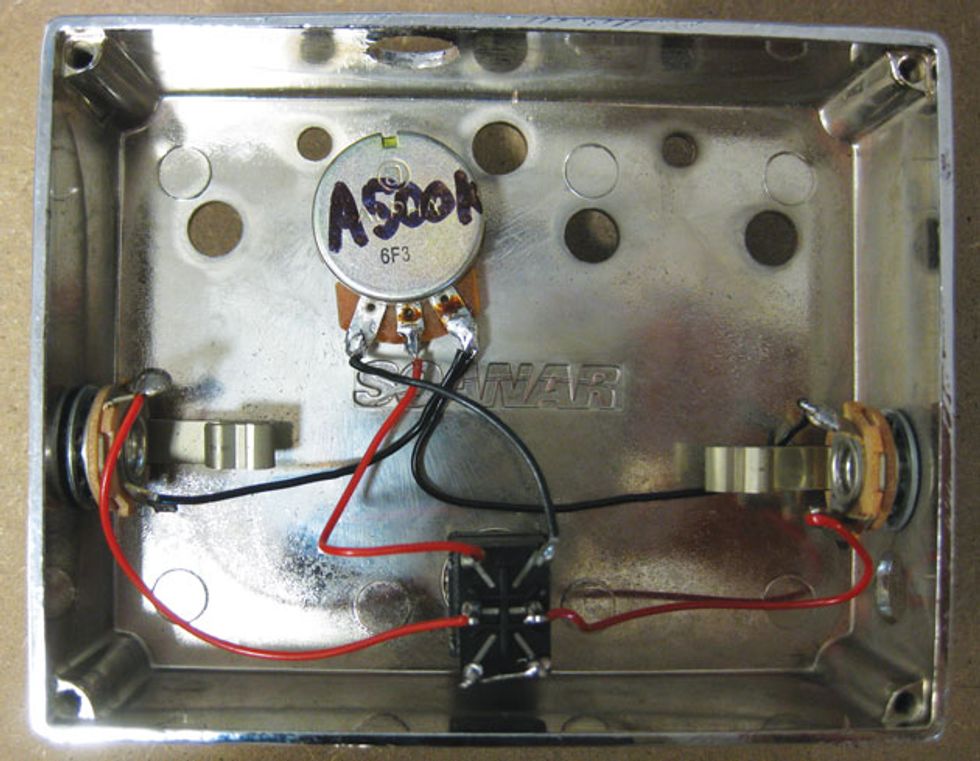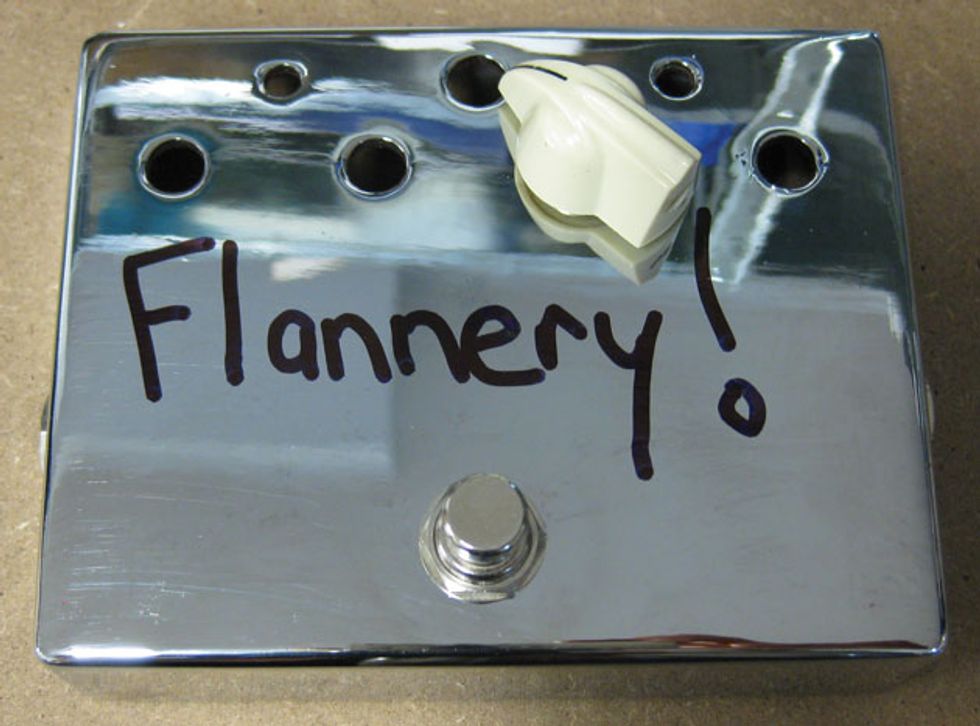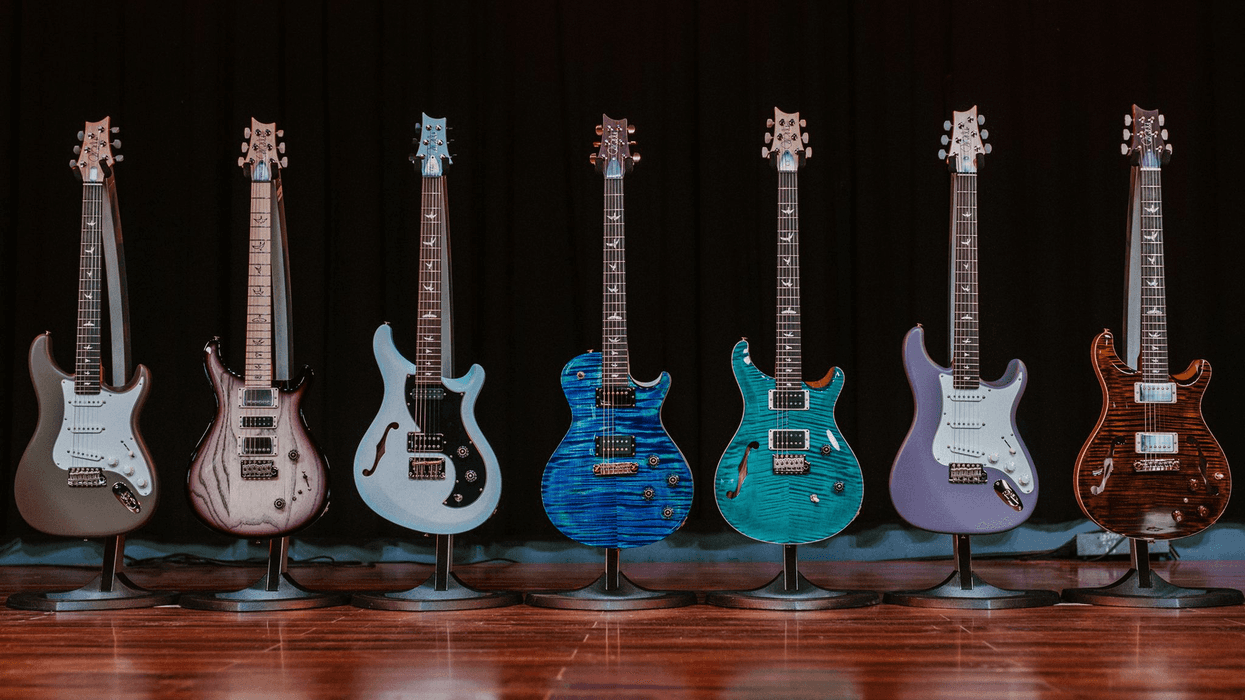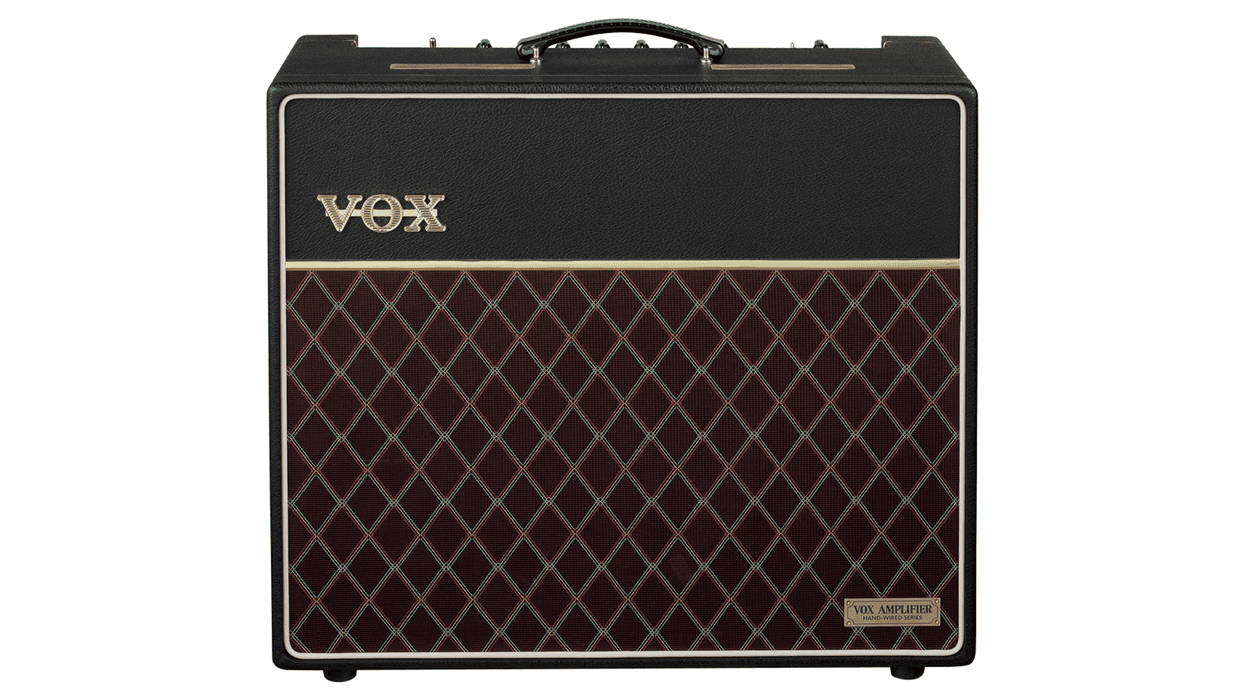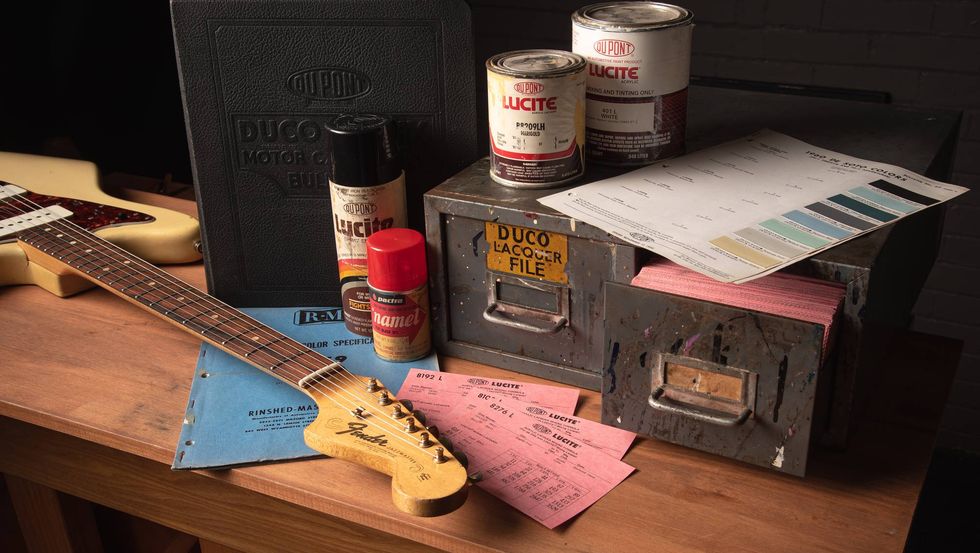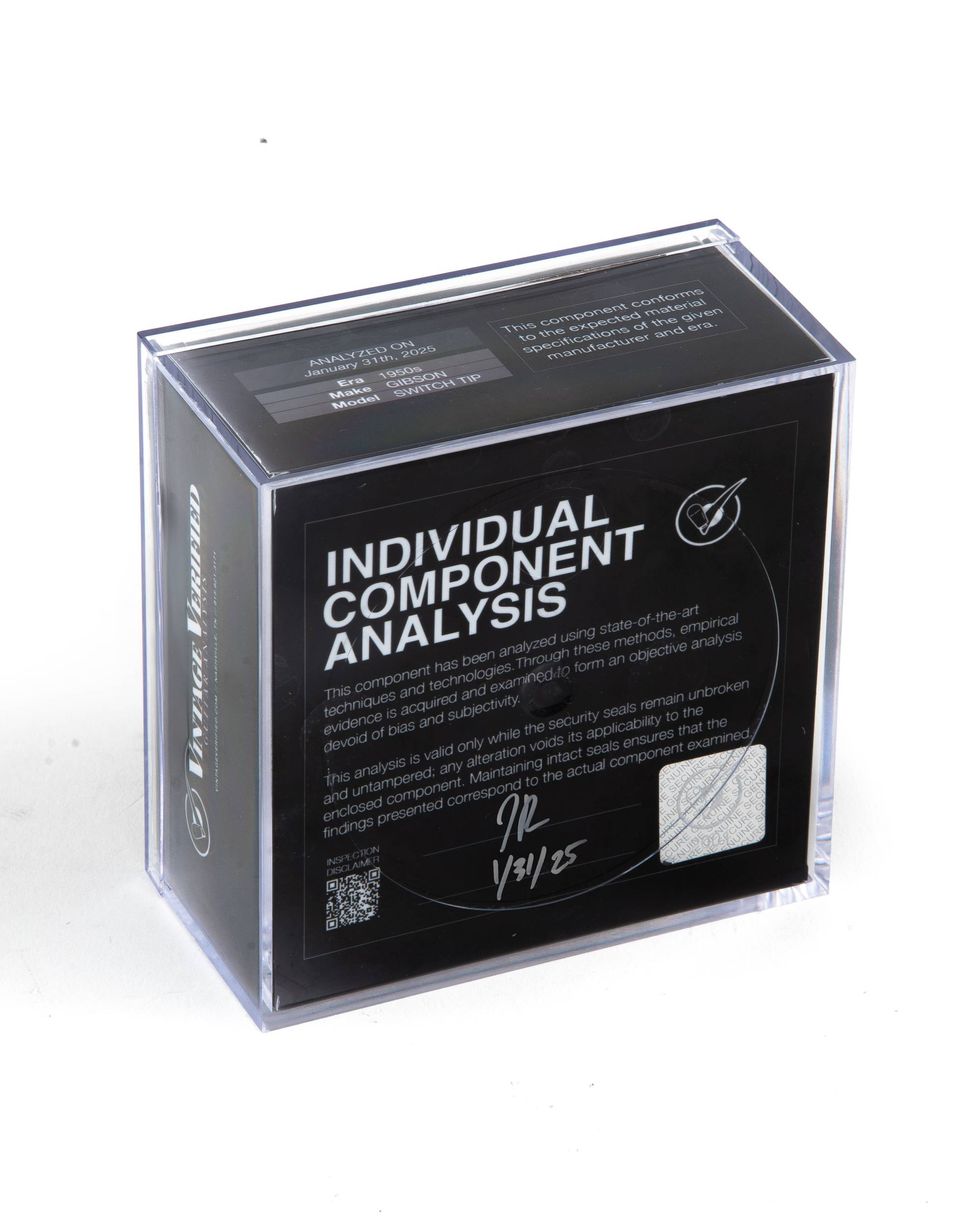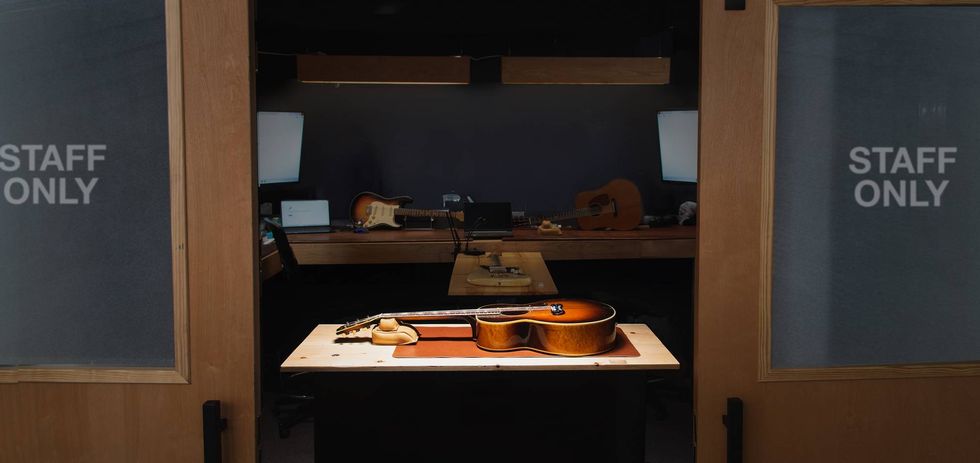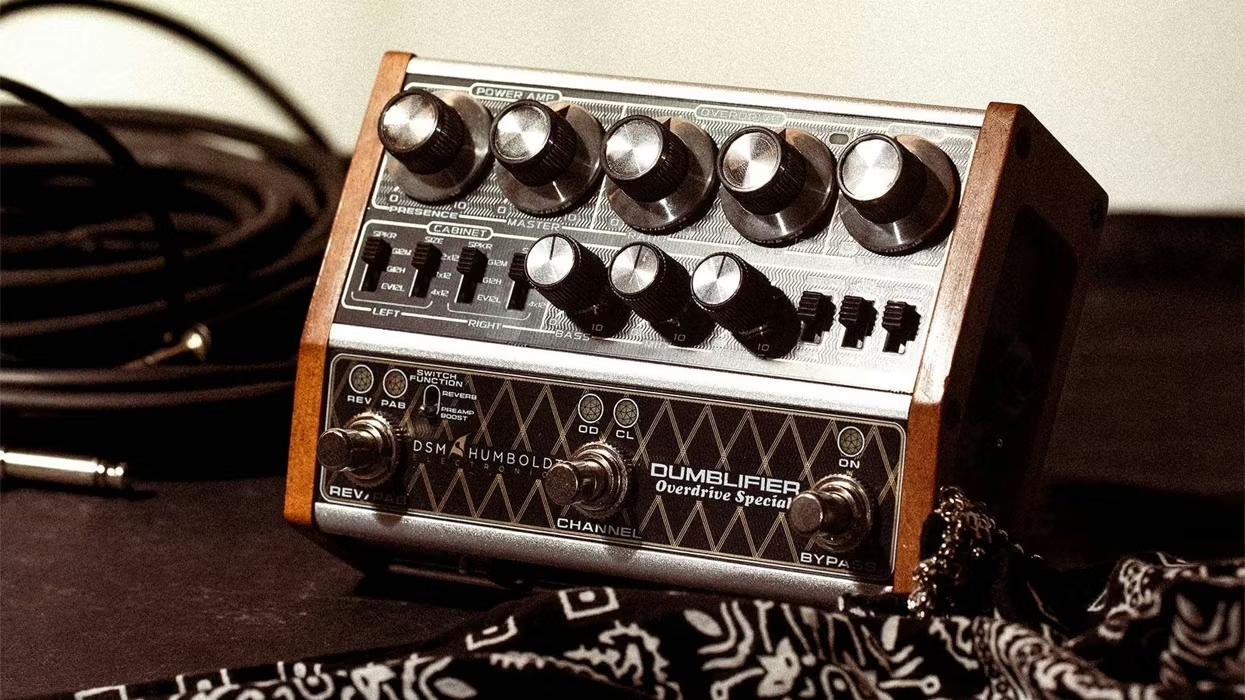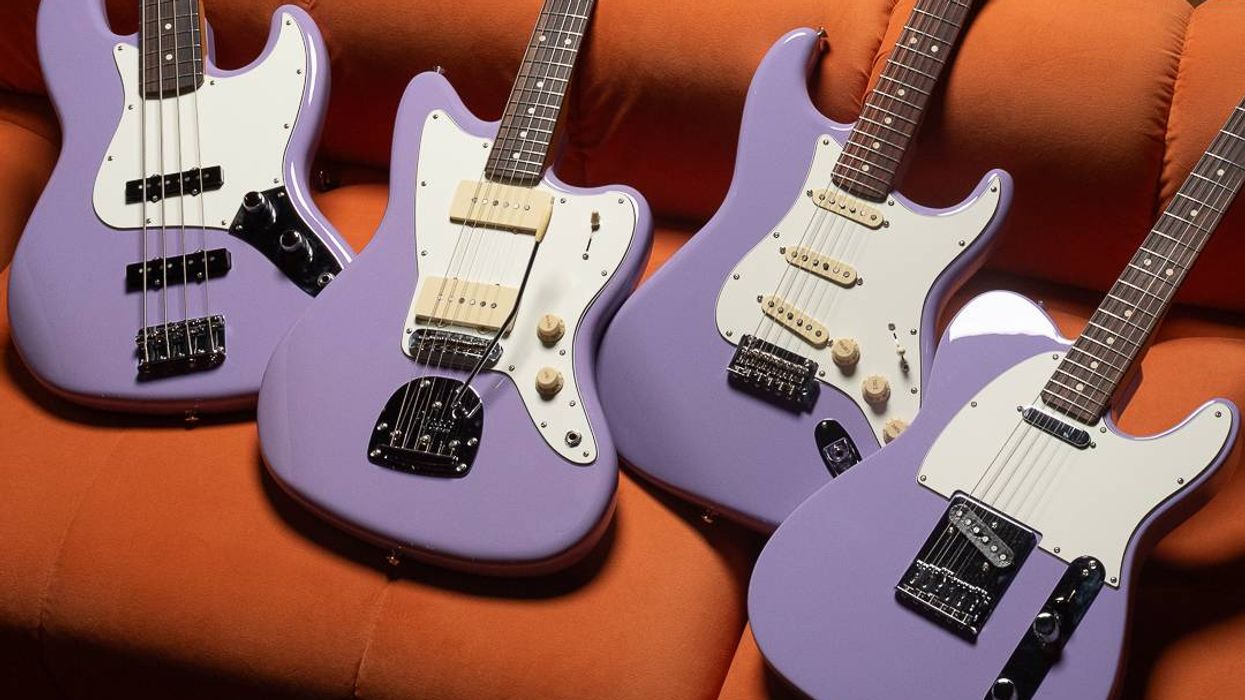I like threes. For me, a trinity is exceptionally satisfying. Three Billy Goats Gruff, the Three Stooges, triodes, voltage triplers, and triplets—you get the idea. So it would seem to be really rather wonky to not conclude the project articles I’ve submitted for my last two columns [“Build Your Own Series Resistance Box,” April 2012, and “Build a True-Bypass Tuner/Mute Box,” July 2013] with a third installment. So let’s make a nice trio, shall we?
Those previous two DIY projects, dubbed Tarquin and Finbar, were very simple. They were intended for folks with little or no technical knowledge, but a desire to engage in a spot of willful soldering and wire jiggling. This new project is no different: a simple but effective DIY stompbox.
I give you Flannery.
Flannery is a passive device you can build yourself. It consists of a 500k log volume pot that can be switched in and out of the signal path. It allows you to preset a volume level that can be stomped in or out as you see fit. Flannery is great for folks who use amp distortion and adjust their gain level from their guitar. Flannery is true bypass, so when he’s not engaged, he won’t color your tone ... at least no more than a short length of cable will color your tone. (Cue heated debate amongst online tone hipsters about just who can hear the difference between a 3' cable and a 4' cable.)
I use Flannery with my Les Paul and Jansen 6 Twenty amp. The Jansen 6 Twenty is possibly the greatest amp design to come out of New Zealand, my homeland. Made in 1964, it consists of two 6L6 power tubes with an output of around 20 watts—a little like a Fender Deluxe, but with a bit more punch. I love the sound of the 6 Twenty when it’s really pushed, and I don’t often use pedals with this amp.
However, to get a clean sound, it’s great to roll back the volume a little bit, and this is where Flannery comes in. I set Flannery so when it’s engaged, I get a creamy break up—about 80 percent of maximum. I set the amp volume at around 8 1/2 and then use my guitar’s volume control to work within Flannery’s preset range. When I need a boost, I disengage Flannery to reveal the amp’s full glory.
Fig. 1. With its 500k log volume pot, Flannery offers a preset volume level that can be stomped in or out.
Flannery would also be useful in a pedal setup: Determine where you want to pad the signal and insert Flannery. This could be after the pedals or among them—it’s up to you.
Flannery is a pretty easy build: Take a steel enclosure and drill out a hole for the footswitch, another hole for the A500k potentiometer, and two holes for jack sockets. Insert the jack sockets, potentiometer, and DPDT footswitch. Fig. 1 shows the enclosure with its face down. As shown here, the input jack is on the left, the output on the right.
Now, solder a wire from the ground lug of the input and output sockets to the right tag of the potentiometer.
Solder a wire from the tip lug of the input jack to the middle tag on the left side of the DPDT footswitch.
Solder a wire from the tip lug of the output socket to the middle tag on the right of the footswitch.
Solder a bridging wire between the footswitch’s bottom left and right tags.
Solder a wire from the footswitch’s top left tag to the potentiometer’s middle tag.
Solder a wire from the footswitch’s top right tag to the potentiometer’s left tag.
Fig. 2. Equipped with a knob, Flannery is now ready to rock.
Voila! Add a knob to the potentiometer and you’re done. Fig. 2 shows my completed box. You could use a 3PDT footswitch if you want to include a status LED.
With some guitars, you’ll find that when Flannery is set to lower volumes there will be some treble roll-off. You can fit a treble bleed capacitor across the middle and left tags of the A500K potentiometer if you want to avoid this. As always, please only engage in this project if you feel comfortable soldering, wiring, reading, and making simple cool things. Construct at your own risk.
So there it is—another super-simple passive pedal you can make for yourself and the necessary last piece in my trilogy of simple projects.
Next time we’ll dive into more esoteric subject matter. Like the answer to everything: 42. Until then, be well, be happy, and be kind to everyone you meet.



